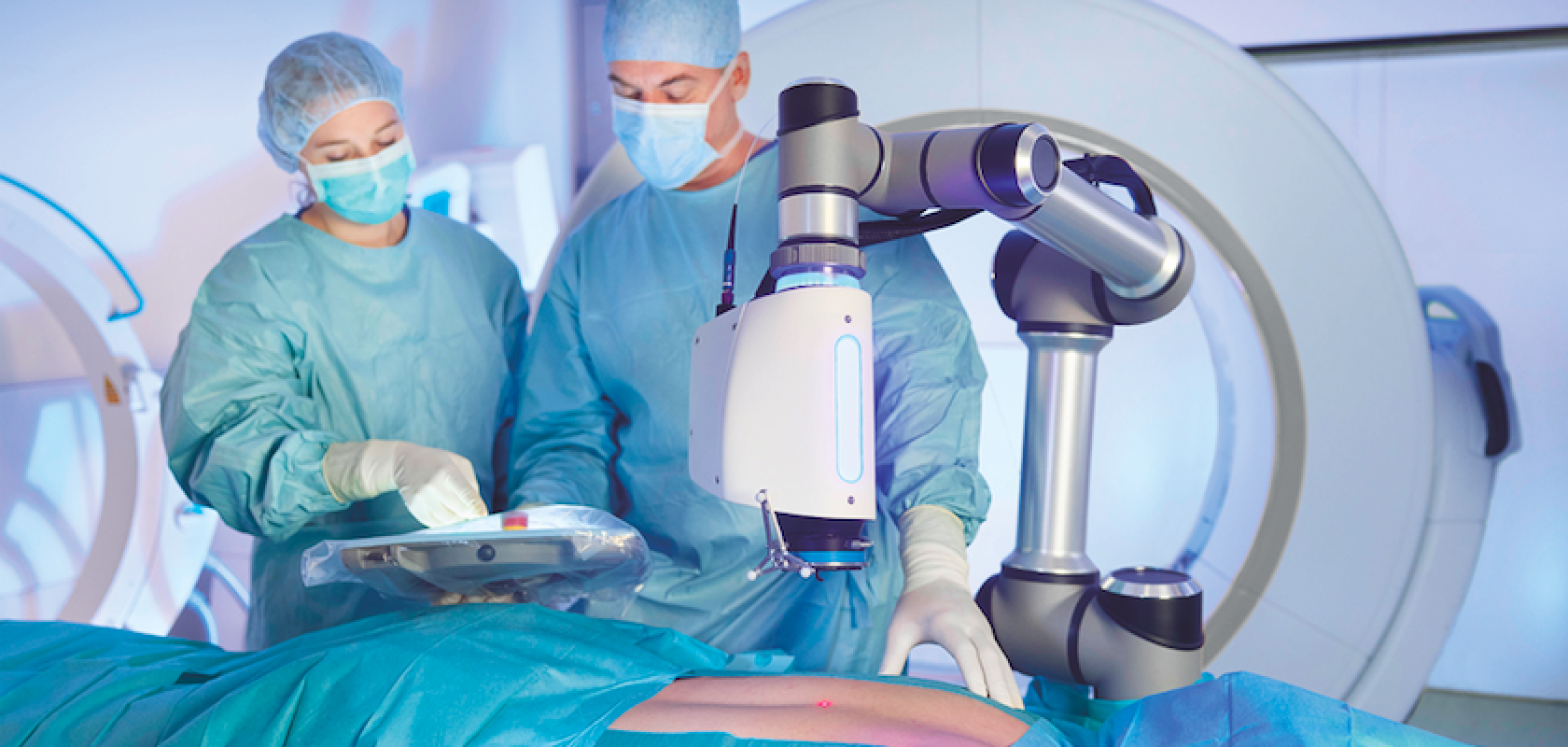Aiming to minimise the risks of surgeries near critical neuronal structures, a research team led by Dr. Achim Lenenbach, head of the Laser Medical Technology and Biophotonics Department at the Fraunhofer ILT, is driving forward robotically assisted laser surgery systems.
The new approach aims to make spinal surgery safer, and reduce complications that can lead to extended hospital stays following spinal surgeries. It achieves this using a short-pulse laser instead of a milling machine, which is traditionally used by surgeons. At the same time, the cutting depth is continuously measured using optical coherence tomography (OCT).
Using short-pulse lasers for precise hard tissue cuts
The operation of these laser surgery systems relies on the ablation of bone tissue using nanosecond laser pulses. This short pulse duration minimises thermal interaction with surrounding material, preventing carbonisation of the cut edges and facilitating the healing process.
The lasers also enable a high level of microsurgical precision, as the thermomechanical effects occur only at the points where the infrared laser pulses contact the hard tissue. This causes the water within the bone to vaporise explosively, creating micro-craters.
Monitoring surgical cuts with OCT technology
Monitoring the cutting process is crucial, particularly for spinal canal operations. This is because spinal operations often work at close proximity to the spinal cord and nerve roots. In an ageing society, back surgeries are becoming more common.
These sensitivities make it even more important for the cutting laser beam to be combined with an OCT measurement beam, which the scanner also guides over the bone surface. This system provides 3D detection of the cutting area, allowing it to penetrate the bone tissue and determine the thickness of the remaining bone lamellae at the base of the cut, with a residual thickness detectable down to approximately 400µm.
The synchronous OCT measurement is essential for the reliable and safety-critical control of the cutting process based on the remaining bone thickness. Once the predefined residual thickness is reached, the cutting process will automatically halt, allowing surgeons to lift the loosened bone easily and safely, without risking damage to the nerve tracts within the spinal canal.
Reflecting on the safety benefits associated with OCT, Lenenbach said: “Based on the scheduled optical monitoring and precise control of the laser cutting process, our procedure could prevent serious injuries to the spinal cord and nerve roots in future.”
Enhancing the approach with haptic feedback
While a patent application has already been filed for the idea of a robotically assisted laser surgery system for the precise and safe cutting of bones, the Fraunhofer researchers are working on enhancing their existing applicator. The plan to miniaturise the technology into an ergonomic handpiece, enabling surgeons to perform the currently automated cutting process manually. To ensure precision, the team plans to integrate a collaborative robotic system that will assist in guiding the applicator.
Commenting on the potential usage, Lenenbach said: “We intend to use this approach for surgical procedures on the spine in the future.”
An important challenge the researchers are aiming to tackle as part of this development is replicating the haptic feedback that surgeons experience with traditional milling tools. Since laser cutting is non-contact, this feedback must be simulated. The researchers plan to utilise the sensors and actuators of a collaborative robot (cobot) for this purpose. The cobot's force-torque sensors will detect the force exerted on the robot arm, allowing its actuators to deliver haptic feedback to the surgeon as they manually guide the laser applicator.
By merging the cobot's haptic feedback with OCT sensor technology, surgeons will be able to control the handpiece's movement based on the force applied, ensuring that cutting only occurs when the residual bone thickness reaches a predefined level. This iterative process of localised micro-cutting, combined with efficient removal of hard tissue, will facilitate a smooth, continuous cutting experience.


